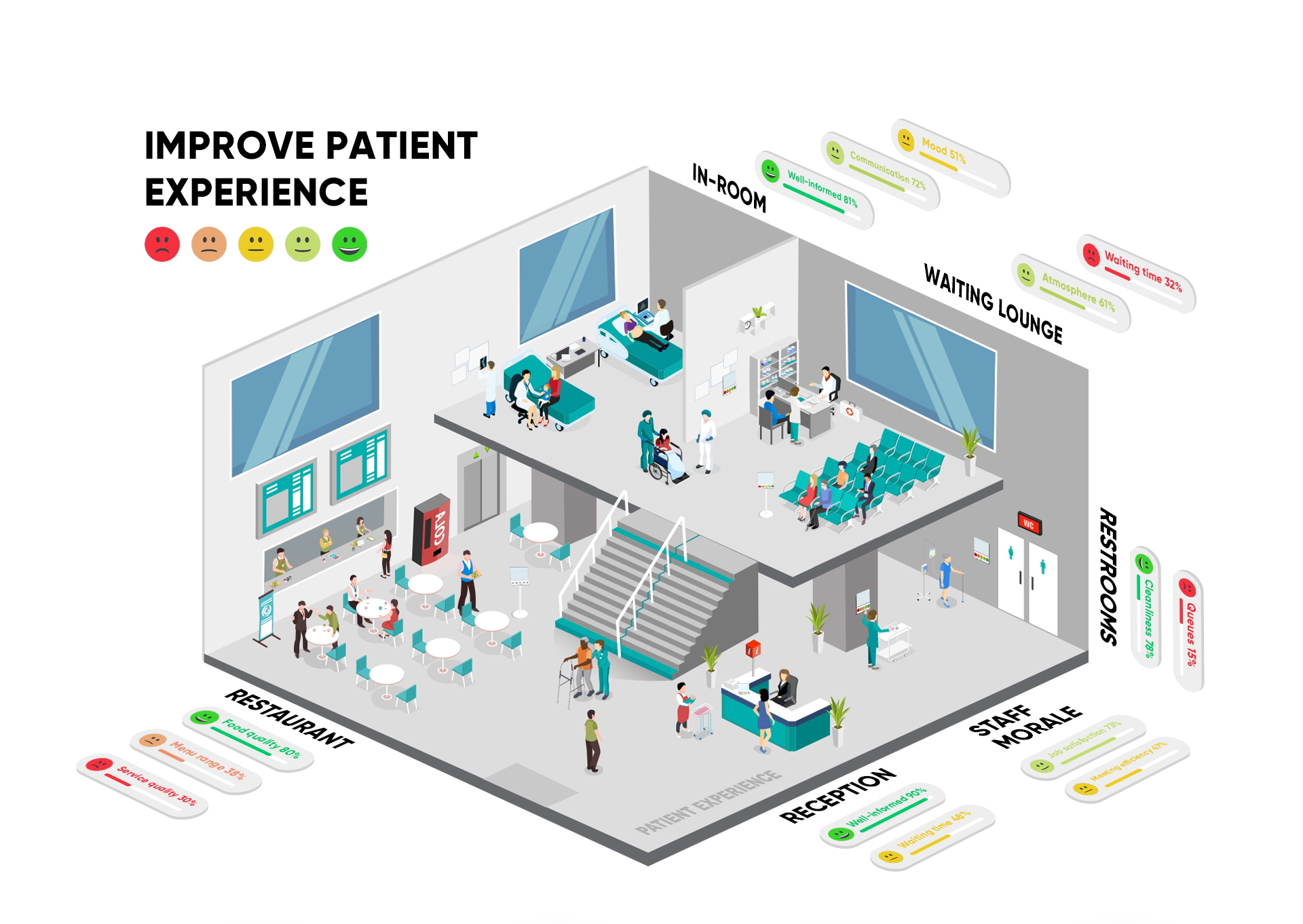With the challenges of a health pandemic to contend with, health care and health systems around the world have looked very different in 2020. In the UK for example, at least seven hospital trusts cancelled or postponed planned operations recently, to help cope with the increased numbers of Covid-19 patients during the second wave of infections. There have been similar scenarios in hospitals across the world trying to cope with the demands of the pandemic.
There have also been requirements for non-Covid wards to be adapted to increase patient capacity when the Covid-specific wards have been full. There were also temporary Nightingale hospitals built in England to cope with the expected high volumes of Covid-19 patients and staff recruited to work in them, so this year has been very different in terms of the usual patient experience.
Technology has been integral in helping to provide health services in the safest possible way during the Covid-19 pandemic. Here are some of the major trends we have seen so far:
Online GP services
While many GPs already offered alternative services such as telephone appointments to patients that could not make it into the surgery, in 2020 online services have become much more common and necessary than before. Services such as ordering repeat prescriptions online through apps and websites have been vital during the pandemic.
As well as offering telephone appointments, GPs have been able to hold appointments by video, so that face-to-face appointments are still possible. These alternative services have been particularly important for people who are self-isolating or shielding, for when they require any kind of medical advice.
Online bookings for standard GP and hospital appointments have also made it easier to get an appointment, especially at a time where they are experiencing higher volumes of calls.
Ordering Covid-19 tests
Online tools have also been essential in the ordering and booking of Covid-19 tests. Websites have been set up to enable people to book in to have a COVID-19 test at a site, or to order one to be delivered to their home.
Symptoms checkers
Another really progressive and useful online solution that is growing in use, is online symptom checkers. GPs have been inundated with patients worried about having Covid-19 symptoms and online symptom checkers can help to reduce the number of calls coming through.
These are not limited to Covid-19 symptoms either, online symptoms checkers can be used to help diagnose a wide range of medical conditions and provide advice as to what actions the person should take. These options are able to significantly unburden health services where a medical expert is not required.
Drones
In a Covid-19 impacted world, finding ways to deliver products without human contact has been a big priority for commercial businesses. Drone deliveries have been in the pipeline for some time and in August, Amazon received approval from the US Federal Aviation Administration to operate with delivery drones, which they have named Prime Air.
The progress made with drones also means that medical deliveries can be completed using drones, avoiding the contact of a delivery person and therefore providing a safer way of getting medicine and other essential health products to patients. Drones are now being used around the world for medical deliveries and this is an area that we can expect to see a much greater uptake in, when more testing has been performed.
AI for more proactive healthcare
Artificial Intelligence has benefitted many industries by improving processes and speeding up actions. In the healthcare industry, AI is fundamental in so many areas of progression. According to the American Cancer Society, AI is allowing mammogram review and translation to happen 20 times faster, while maintaining 99% accuracy.
Early detection of a wide range of diseases can be helped by using wearables to monitor health and diagnose problems such as heart disease. The analysis of data using AI is driving major benefits, with more proactive actions rather than the more reactive approach that the healthcare system normally operates with. Technology is enabling the identification of patients who are at risk of developing a medical condition due to factors such as lifestyle or genetics.
The power of AI is only just starting to take hold but over the next few years, the capabilities of Artificial Intelligence should save many lives and identify diseases and illnesses much earlier, giving patients a much better chance of prolonging life.
E-learning for health staff
Being able to offer e-learning modules to all levels of staff providing health services is another key trend that has been even more beneficial in 2020. From helping GP receptionists to efficiently work with a booking system, to enabling surgeons to learn new procedures, the quality of e-learning solutions has increased rapidly in recent years, which has a considerable impact on the quality of the patient experience.
Being able to receive training and important communications online helps to ensure that health staff have the latest updates and information to enable them to stay up to date with best practices and better ways of working. Online conferences using technology platforms such as Zoom have replaced traditional conference events, ensuring that the vital knowledge sharing is still possible throughout the Covid-19 pandemic.
Mental health and wellbeing support
One of the additional health concerns resulting from Covid-19 lockdown restrictions and other worries such as job losses, is mental health, as evidenced by the increasing numbers of people suffering from mental health issues this year. With people less able to seek help in some of the usual ways such as speaking face to face with a doctor or counsellor, online support is really important and there has been an influx of apps and tools developed for this purpose.
Apps with self-care tips, monitoring sleep patterns, improving diet and a wide range of additional features are helping people to manage their mental health and having more information available online is another valuable channel of support.
The mental health of healthcare workers is also a big concern, with increased pressure placed on many staff due to the Covid-19 situation, as well as the worry about being exposed to infection through their work. Healthcare providers and professional bodies have been introducing new ways to provide support to staff. In the UK, the NHS has recently announced a £15m funding package to provide greater support through services such as outreach and assessment, as well as wellbeing and psychological training.
By providing staff with better wellbeing support, the patient experience should see the positive impact of these new measures and it is also expected to reduce the amount of sickness and therefore staffing levels will be higher, helping to deliver a better quality of patient experience.
Collating patient feedback

Measuring the patient experience is a very important factor in making sure continual improvements are made to health services but with contact being as limited as possible due to Covid-19, delivering a high-quality patient experience has been more challenging than usual.
Also, the methods used to collate data regarding patient experience have been impacted by the health pandemic. For example, paper-based feedback surveys could no longer be used to collect patient feedback, due to the risk of infection.
Being able to monitor how the patient experience is being affected by Covid-19 and other factors, allows issues to be highlighted and actions taken where necessary. Being able to collate patient feedback within hospitals and GP surgeries is vital, as sending out email surveys after the visit may delay important issues getting raised or people simply won’t respond.
However, with social distancing restrictions and the hygiene concerns of collating feedback in more traditional methods such as paper-based forms, an alternative is needed. One great example is the QR code stickers that are provided by Ombea. These stickers are dual purpose, so they can be used to mark out social distancing spaces for queues at reception or other areas, while also proving a quick and easy method for leaving feedback.
The patient simply needs to scan the QR code using their smartphone and they will be taken to a survey where they can answer the questions and leave any comments that they wish to about their patient experience. The health provider is able to choose how to structure the survey and the types of questions that they want to ask to find out information about specific areas of the patient experience.
The floor stickers can easily be fixed in the most appropriate place and people waiting to be seen will have time to scan the QR code and quickly answer the questions at a time when they are thinking about the experience, so they are more likely to respond. It is also one of the most hygienic methods of collating feedback, as opposed to using touch screens or pens and paper.
The data is all collated online with reports easy to export and view by managers and the patient experience or QA team, so that improvements can quickly be implemented. Data is available in real-time, so this significantly speeds up the availability of data compared to paper surveys and forms. There is also no manual work required to collate the feedback, so less employees are required in the collation and management of patient experience feedback through this method.
Conclusion
There has never been a more important time to be able to capture patient experience and employee experience across the spectrum of different health services around the world. Advanced technology has been a powerful solution to many problems faced in 2020 and to ensure 2021 sees significant service improvements, using sophisticated digital tools to analyse important health data and other innovative solutions must be embraced.
Whether it is a QR code that hygienically captures patient feedback, or AI for enabling earlier diagnosis of health problems, there are so many available options to help improve services and the patient experience.
